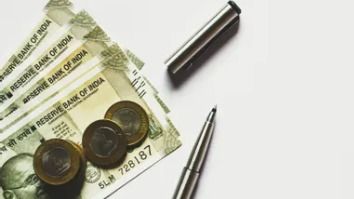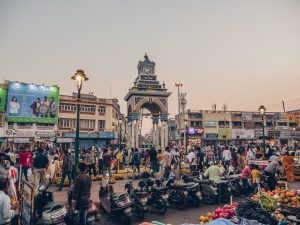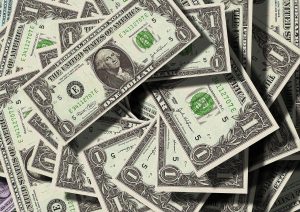The Economic Survey 2020-21, tabled in Parliament on Friday, stuck to the tried and tested formula of reiterating the positives while nimbly skipping the unpleasant aspects of India%u2019s economic journey in a pandemic year. It projected the highest ever GDP growth of 11% for FY22, took note of the less-than-expected contraction in the current one at just -7.7% and referred to a sharp V-shaped economic recovery already underway.
Even after the 11% growth projection for next fiscal, India will take two years to go past the pre-pandemic output level. The current fiscal has already seen the worst economic contraction of nearly 24% in the first quarter (April-June), massive job losses, unprecedented shrinkage in factory output and rising inflation due to the COVID-19 induced lockdowns.
The Survey has talked at length about the government%u2019s calibrated policy response which enabled the return of growth. GDP is expected to stop declining and grow by 0.1% between October and March, according to first advance estimates by the government, pointing to a V-shaped recovery. While applauding the myriad reforms already implemented by the Modi government, the Survey says the supply side initiatives culminated in the %u2018Atmanirbhar Bharat%u2019 cry. Agriculture, labour, power and small scale industries are among the sectors which have already seen sweeping reforms, according to the Survey.
Also Read | Upcoming Union Budget to be seen as extension of mini-budgets presented by Finance Minister, says PM Modi
Growth:
The Survey has predicted the highest ever real GDP growth rate of 11% in 2021-22 while reiterating the contraction in the current fiscal to be -7.7%. The latter figure has already been released by the government as part of the first advance estimates of GDP growth earlier this month. Usually, this number gets revised with the second advance estimates (scheduled for the end of February) and for the pandemic year of 2020-21, there is a general consensus that the revision could be steep. This happens because of inherent discrepancies in the methodology of data collection, which makes it near impossible for real time data from the unorganised sector. In simple terms, this means that the economic contraction seen in India%u2019s vast informal sector would not have been adequately captured in the first advance estimates.
On the robust growth projection for FY22, the Survey said %u201CThe V-shaped economic recovery is supported by the initiation of a mega vaccination drive with hopes of a robust recovery in the services sector. Together, prospects for robust growth in consumption and investment have been rekindled with the estimated real GDP growth for FY 2021-22 at 11%.%u201D
Deficit:
The Survey acknowledges that in a pandemic year, the general government (Centre plus states) is expected to register a fiscal slippage in FY 2020-21 due to shortfall in revenue and higher expenditure requirements. Analysts are projecting a fiscal deficit of nearly 7% of GDP this fiscal against the 3.5% targeted at the beginning of 2020-21. Also, in FY22 to the fiscal deficit figure is expected to remain elevated %u2013 analysts have projected anywhere between 5-6.2% of GDP. According to the Survey, fiscal deficit had already increased by a third between April and November this year.
Raise expenditure, reduce taxation:
The Survey has recommended a %u201Ccounter cyclical%u201D fiscal policy, exhorting the government to be more %u201Crelaxed%u201D about spending and enhance its expenditure in a recessionary year. Does this also mean that some taxes could be lowered in the Union Budget since the increased expenditure is usually accompanied by lower taxation? There have been reports about the Finance Minister considering income tax relief so that salary earners have more disposable income. With two consecutive quarters of negative GDP growth (April-September), the country has already slipped into what economists call a %u201Ctechnical%u201D recession. The Survey uses the analogy of kings building palaces in times of famines and droughts to provide employment and improve the economic fortunes of the private sector. %u201CEconomic theory, in effect, makes the same recommendation: in a recessionary year, the government must spend more than during expansionary times. Such counter-cyclical fiscal policy stabilizes the business cycle by being contractionary (reduce spending/increase taxes) in good times and expansionary (increase spending/reduce taxes) in bad times,%u201D it has said.
Also Read | What does the ailing healthcare sector seek from Budget 2021?
Poverty:
India has been facing off China at the borders but the Survey has taken the example of this neighbour to demonstrate how robust economic growth leads to faster poverty alleviation. %u201CChina has made exceptional strides in reducing its extreme poverty rates since the 1970s. As per data from the China National Bureau of Statistics, the head count ratio of poverty has reduced by 94% from 1980 to 2015 in rural China. By the official poverty line, which is about 21 per cent higher than the line that is set at $1.9 per day (2011 PPP), since 1980, the country has made remarkable progress in reducing poverty,%u201D the Survey noted. So does this mean the nearly two years India could lose in terms of economic output would push the country back in poverty alleviation by the same margin?
#EconomicSurvey #UnionBudget2021 #Budget2021 #BudgetSession #NirmalaSitharaman #India #IndianEconomy






